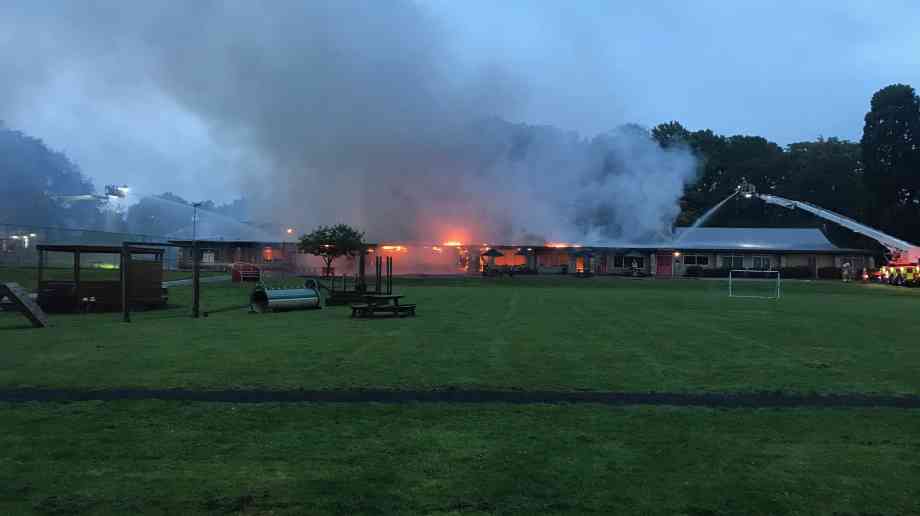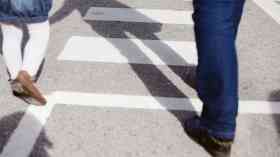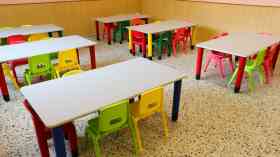
Reducing the impact of fire on education
The pandemic sadly created a legacy of lost learning. But incidents of fire at a child’s school can also have a negative impact on education. Tom Roche, secretary of the Business Sprinkler Alliance makes the case that protecting schools from fire is about protecting continuity of education
The upheaval in education due to the pandemic was well documented and sadly created a legacy of lost learning. Now, more than ever, further interruptions to education should be avoided. Fire can also have an impact on a child’s education. Despite the fact there has been an increase in school fires since the lockdowns of 2020-2021, sprinklers are still only mandatory in new school buildings in Scotland and linked to funding in Wales, but not in England and Northern Ireland. Yet observations on the incidence of fires relative to the population of school buildings, indicates that the rate of fires in England is similar to that of Scotland and Wales. Tom Roche, secretary of the Business Sprinkler Alliance makes the case that protecting schools is about protecting continuity of education.
When you consider the huge costs associated with school fires such as rebuilding, temporary relocation, loss of equipment and pupils’ academic work, we are still not learning the lesson about fire and its impact and building schools without sprinkler systems. Fewer than one-in-six new schools have been built with a sprinkler system installed yet the fire incident statistics for England in primary/secondary and other educational establishments has seen a rise from 250 in 2020/21 to 341 in 2021/22.
Derbyshire schools
I do not think anyone will have missed the two fires across Derbyshire schools in 2020 which were a painful reminder of the damage, the displacement of pupils, disruption to education and the costs incurred when they are not fitted with sprinklers. On the morning of Saturday 3rd October 2020, St Mary’s Catholic Voluntary Academy in Darley Abbey, Derby was largely destroyed and reported as a ‘total loss’. Just 48 hours later, in the early hours of Monday 5th October, there was a second severe fire only four miles away, this time at Ravensdale Infant School in Mickleover which required 12 fire engines from the Derbyshire Fire and Rescue Service. Whilst the Fire and Rescue service brought the fire under control there was extensive damage to the building. Neither building had sprinklers fitted.
The 110 children from the St Mary’s Catholic Voluntary Academy were originally sent to work from home for three weeks before being displaced into two separate local schools where they have been since April 2021. There is no firm date for the replacement school but it is noted to be part of a pilot scheme for the Department of Education and will be rebuilt as the UK’s ‘most environmentally friendly school.’ The 227 children from the Ravensdale school were moved to temporary locations prior to completion of a £8 million rebuild in June 2022.
Halifax school burns to ground
An event that did not attract as much attention was a fire that broke out at the unsprinklered Ash Green Primary School in Mixenden on February 1st 2022. The fire destroyed a quarter of the key stage two block and impacted the entire school population.
The severe fire required 10 crews and one aerial ladder platform from the West Yorkshire Fire and Rescue Service. Despite their efforts there was such extensive damage to the single-storey upper school building that the upper school had to close, the pupils from this part of the school were displaced to temporary classrooms or further alternative spaces. The estimated cost of the upper school rebuild is £4.5 million and it is expected to be completed in 2025 – that’s three years of disruption to the education of 500 pupils.
It is worth stressing that the fire at Ash Green Primary was not about the destruction of the whole school. Whilst such events garner the headlines, fires that cause damage to two or three education spaces or classrooms can really have an impact. Put simply, a school just runs out of space to relocate students in such an incident, and it leads to the work of an entire school/department and the delivery of education being hampered.
A thousand school children displaced
Whilst many may be struck by the financial consequences, the key item is that across these three events is that over 1,000 pupils were displaced and have seen weeks of disruption to their lessons. That disruption has meant parents adjusting childcare, trying to continue lessons at home and dealing with the impact of the event with their children. That impact continued until they found temporary accommodation but that was not always in the same place as the original school.
Prior to the pandemic, government was insistent that even a week’s interruption to their education would have a negative impact on a child’s attainment. Indeed so adamant were they that they fined parents £60 a day for removing them from school. Fires such as those described have an even greater impact.
According to a 2019 study by Zurich Municipal, education insurer for half of the schools and universities in the UK, two-thirds of schools have ‘poor’ fire protection and are not properly prepared for a potential damaging fire. It also found that schools in England are ‘twice as likely’ to suffer fires than other commercial buildings. The insurer has stated that a change to government legislation to make sprinklers mandatory will not only protect children in school but will also contain a fire to the room it starts when it begins out of school hours.
Building Bulletin 100
The government consulted on a revised version of Building Bulletin 100 (BB100): Design for fire safety in school over a year ago. The consultation document had no impact assessment supporting the assertions in the document or an indication of the impact fires have on the education of pupils. The BSA has always highlighted that the current BB100 sets the right expectations around the protection of schools and the continuity of education. It sets an expectation that the school should be fully functional within 24 hours of a fire, apart from the room where the fire occurred. The BSA wants the government to explicitly maintain these objectives in the revised BB100 so that fewer schools are damaged or destroyed by fire. Better still, the government should make property protection a consideration for the fire safety Building Regulations to effectively protect all buildings of significant social and/or economic value from fire. Automatic sprinklers would be a key tool in achieving this outcome.
Fire can have a lasting and devastating impact on both schools and communities and must be avoided and minimised. Schools should be designed to withstand the risks they will be exposed to whether that is fire, flood, theft, or storm, etc. Too often these considerations are limited.
Ensuring the safety of a building’s occupants is the minimum under current regulations, but it is clearly not the optimal outcome. Continuity of education would be a more appropriate outcome. In the pursuit of such an outcome a sprinkler system would be an ideal part of the fire strategy, serving to protect both the occupants and the building, allowing students to return to normality far more rapidly and with considerably less disruption to teachers’ already hectic schedules during this pandemic.
The impact of fires on schools can be minimised. As a nation we continue to spend billions of pounds on the school estate. Yet how many more fires need to occur and children’s educations be disrupted before sprinkler installation becomes a part of that thinking for school design and safety?
Latest News
19/12/2025 - 09:54
The Education Committee has expanded its ongoing inquiry into the early years sector to examine how safeguarding can be strengthened in early years settings.
18/12/2025 - 09:25
The UK will be rejoining the Erasmus programme in 2027, following a package of agreements with the EU.
17/12/2025 - 09:31
Ofqual has fined exam board Pearson more than £2 million in total for serious breaches in three separate cases between 2019 and 2023 which collectively affected tens of thousands of students.
16/12/2025 - 09:19
The average funding rates will increase by 4.3% for under 2s, and by almost 5% for 3-and-4-year-olds.
15/12/2025 - 10:30
Local colleges are set to receive £570 million in government funding to expand training facilities in areas such as construction and engineering.







